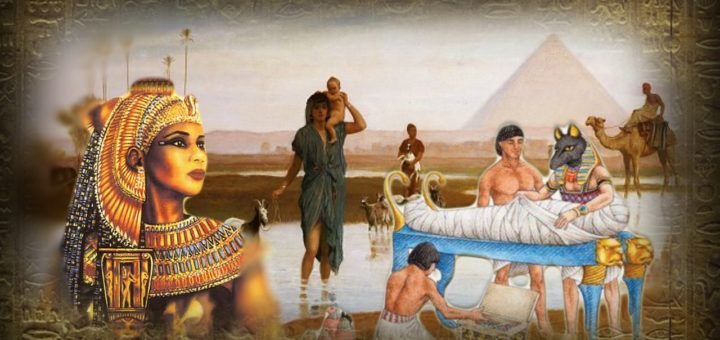
The history of ancient Egypt is a permanent attraction for contemporaries. It captivates the charm of the mysteries and enigmas that are waiting to be elucidated, but also through the unusual aspects specific to it.
Whether it is the rudimentary practices of ancient medicine or the origins of makeup, the ancient times of Egypt remain an inexhaustible source of surprising information.
The history of ancient Egypt is characterized by an incredible longevity stretching over three millennia. The apogee was undoubtedly reached under the leadership of the Pharaohs, kings and lonely intermediaries between men and gods, a guarantor of both external (invaders) and internal order (social disturbance).
The history of ancient Egypt begins around 3100 BC, the Pharaoh Menes unified Egypt. It became a powerful empire that lasted until 30 BC when it was conquered by the Romans.
Cleopatra actually came from Greece
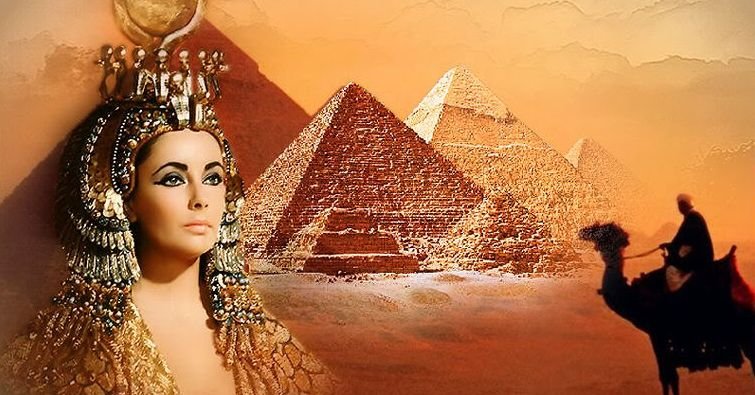
Becoming Cleopatra VII of Egypt, she was the last pharaoh of Ancient Egypt. It was part of the Ptolemy Dynasty, of Greek origin, a dynasty that ruled Egypt after the death of Alexander the Great.
The members of this dynasty spoke the Greek language, vehemently refusing to express themselves in the Egyptian language.for this reason, both languages were used in the drafting of official documents.
But Cleopatra’s nonconformist spirit contrasted with the conservative beliefs of his family. Thus, she learned and used the Egyptian language and, moreover, embraced the country’s culture, representing the reincarnation of the Egyptian goddess Isis.
Both men and Egyptian women wore elaborate makeup
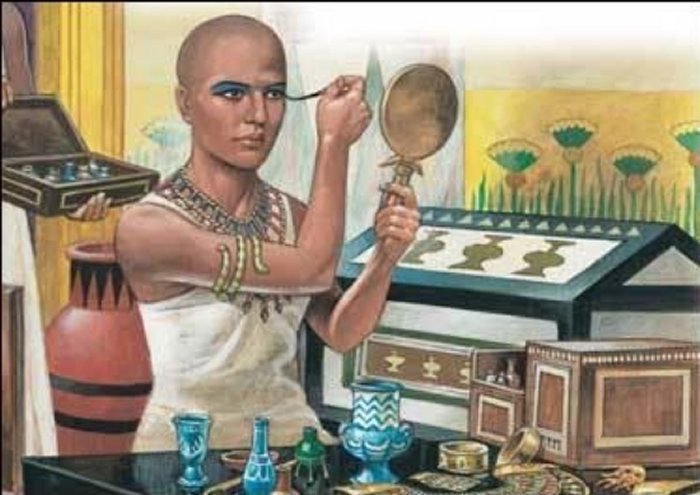
Ancient Egypt is considered to be the cradle of makeup, dating back to the third millennium BC. Eye makeup was generally green (made of copper) or black (made of lead).
The Egyptians believed that makeup had healing powers. Antimony, or Khol (the black pencil), as we call it today, with which the Egyptians shaped their eyes, was able to defend the eyes of the desert people.
He continually irritates the lacrimal glands. He also had a symbolic function, reminding of Horus’s eye. Horus was the sacred hawk whose visual acuity symbolizes the struggle of light against the shadows.
There are sketches with the nude statue dating back to 1737. Thus, the hypothesis that it was destroyed by Napoleon (the Campaign in Egypt took place between 1798-1801) or during the world wars has no real basis.
The only one that is known to have caused damage to the monument is a Muslim cleric called Sa’im al-Dahr. But he was tormented in 1378 for acts of vandalism.
Egyptians are the inventors of the calendar
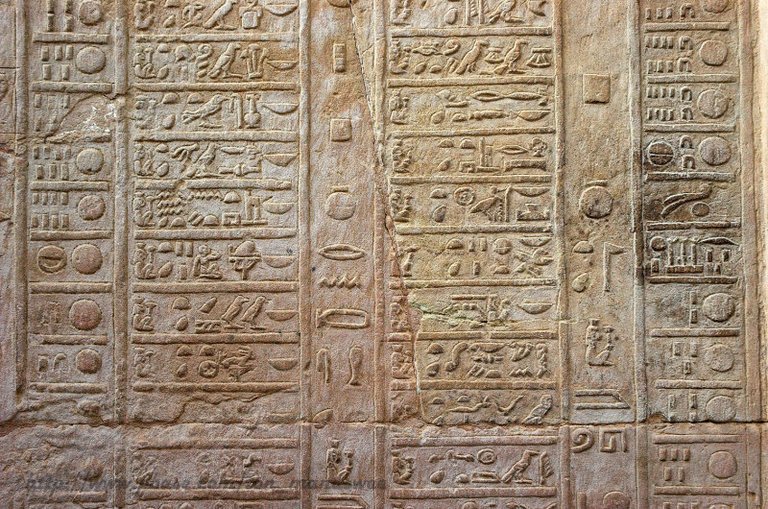
The discovery of a tablet from King Djer’s reign in the First Dynasty (about 3000 BC) led the first Egyptologists to declare that the Egyptians had already established a link between the Sirius Star Heliac and the beginning of the year.
According to the ancient Egyptian calendar, the year was 365 days and was divided into 12 months of 30 days each, plus five additional days at the end of the year.
The months were divided into three weeks, and one week was 10 days.because the Egyptian year was about a quarter of a day shorter than the solar year, and star events did not occur at the same calendar date, also known as Annus Vagus or “Wandering Year.”
Ancient Egypt had a different calendar during the Old Kingdom, with the year of 320 days as mentioned on the Stone of Palermo.
Egyptian drugs included mouldy foods
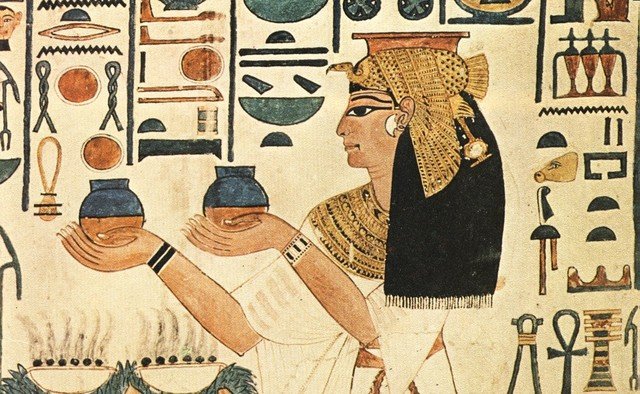
The legendary Greek poet Homer said, “The native land of Egypt is the richest in cure.”
The ancient Egyptians used oil, dough, onions, garlic, flax seed, dill, myrrh, opium as well as various minerals, lead salts, antimony, brain, blood. All of these “drugs” were administered in milk, wine, beer, or boiled.
For example, infections were treated with mouldy bread. Lung diseases were fought with cream, honey mixed with cumin, milk with locusts. They made inhalations, with a cane, absorbing the vapour of a boil in which they mixed dates, resin, myrrh. The castor seed, well-chewed, then drinking beer, was an ordinary laxative.
When the body was mummified, almost all organs were removed
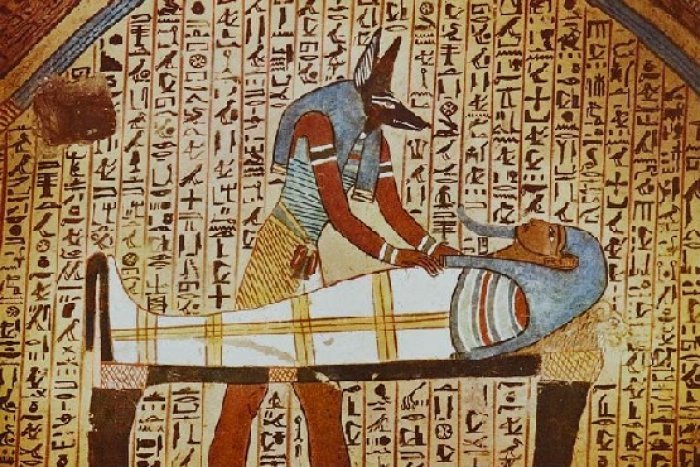
The second stage of the mummification process coincides with the removal of internal organs. Through a small incision on the left side of the body, the intestines, the stomach, the liver, and the lungs were removed.
Each of these organs was then dried in the natron to prevent bacterial attack after that they were individually wrapped in long strips of cloth and placed in a pot (each of the four vessels representing one of Horus’s four sons).
The brain was pulled from the cranium through the nostrils with the help of two long sticks. The only organ that remained in the body was the heart, for the Egyptians considered it the place of the soul.
Wigs were a very important accessory for the Egyptians
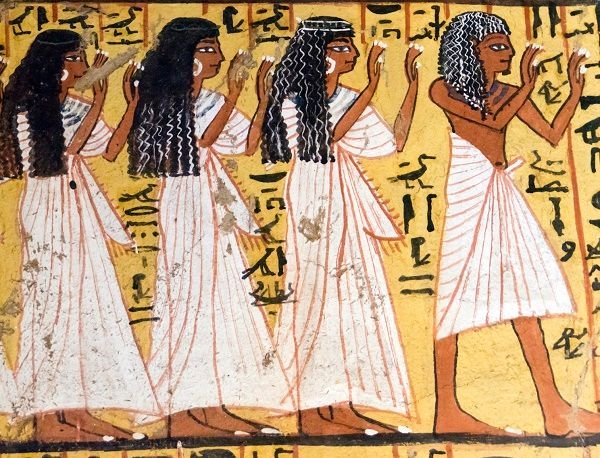
As distinctive signs, the rich Egyptians wore wigs, and the poor wore their long hair on their backs or braided tails. Also, by the age of 12, the Egyptian boys had their head shaved, keeping only a long hairline. Including the pharaoh always wore a wicker, called “nemes”, in order not to let go of the capillary adornment. Wearing wigs removed the problem of lice and relieving people holding such items of clothing to lose time by arranging their hair. In addition, this capillary accessory could mask the ancient Egyptians and certain deformities are grown on the scalp.
Other curiosities specific to the ancient Egyptian world
In the Egyptian vision, it is considered that the earth is flat and round, and the river Nile passes through its centre. Contrary to the habit known today in ancient Egypt, the mourning was white, not black. The ancient Egyptians used to believe that crossing the threshold of the house with its right foot is lucky.
The women of Ancient Egypt had the same status as men in economic and legal terms. Instead, they did not enjoy equality in social life.
The original colour of the pyramids is white. Over time, because of climatic phenomena, they have changed colour, as we can see today.
Strange and scary facts.....Proud to be an Indian and Not Egyptian hahaha
Hi! I am a robot. I just upvoted you! I found similar content that readers might be interested in:
https://www.matrixdisclosure.com/curiosities-ancient-egyptian-world/
@originalworks
To call @OriginalWorks, simply reply to any post with @originalworks or !originalworks in your message!
For more information, Click Here!
Special thanks to @reggaemuffin for being a supporter! Vote him as a witness to help make Steemit a better place!